Let’s see various types of sensors within their classification and Applications. A sensor is a device or component that detects changes in its environment and converts those changes into an electrical signal or another form of readable data.
Sensors are used in various applications to monitor, measure, or control processes, equipment, or environmental conditions. They are crucial components in various systems across industries, from consumer electronics to industrial automation and healthcare.
Working of Sensors:
Here’s a breakdown of how Sensors work.
Sensing Element: This is the part of the sensor that directly interacts with the environment to detect changes. It could be a physical, chemical, or biological material that responds to stimuli such as temperature, pressure, light, etc.
Transducer: The sensing element usually produces a change in some physical property, such as resistance, capacitance, or voltage. The transducer converts this change into an electrical signal that can be measured and processed.
Signal Processing Circuitry: Many sensors include circuitry to condition, amplify, filter, or otherwise process the electrical signal from the transducer to improve accuracy, stability, or compatibility with the rest of the system.
Output Interface: This is where the sensor delivers its output. It can be an analog voltage, current, or digital signal, depending on the sensor and its application.
Temperature Sensor:
These sensors measure temperature changes in their surroundings.
Temperature sensors can be categorized as analog or digital. Analog temperature sensors detect changes in temperature through alterations in physical properties such as resistance or voltage. An example is the LM35, a classic analog temperature sensor. LM35 with Arduino interfacing.
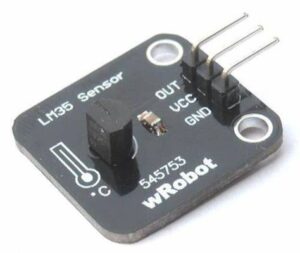
On the other hand, digital temperature sensors provide output as discrete digital values, typically after converting analog signals to digital data. An example of a simple digital temperature sensor is the DS18B20. Types of sensors for measuring temperature.
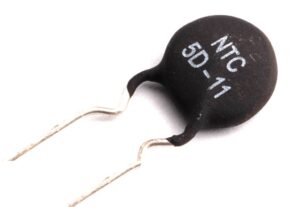
- Thermocouples
- Resistance Temperature Detectors (RTDs)
- Thermistors
- Infrared (IR) Sensors
- Bimetallic Strips
- Thermopiles
- Semiconductor-Based Temperature Sensors
Pressure Sensors:
Pressure sensors measure pressure changes in gases or liquids and have various applications in industries, automotive, aerospace, medical, and consumer electronics.
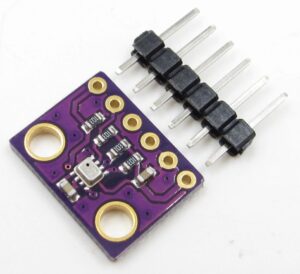
Here are some common types of sensors:
- Strain Gauge Pressure Sensors: Measure pressure indirectly by detecting diaphragm or membrane deformation. They offer high accuracy and are used in industrial and automotive applications.
- Piezoresistive Pressure Sensors: Use the piezoresistive effect in semiconductor materials to measure strain. They’re small and sensitive, commonly used in automotive, medical, and industrial fields.
- Capacitive Pressure Sensors: Detect pressure by changes in capacitance between plates caused by diaphragm deflection. They are highly sensitive and used in low-pressure measurement applications.
- Piezoelectric Pressure Sensors: Generate electrical charge in response to pressure. They’re used in dynamic pressure measurements like shockwaves and vibration analysis.
- Resonant Pressure Sensors: Measure pressure by changes in the resonant frequency of a vibrating element. They offer high sensitivity and stability and are used in precision pressure measurement.
- Microelectromechanical Systems (MEMS) Pressure Sensors: Manufactured using microfabrication techniques and incorporate capacitive, piezoresistive, or piezoelectric elements. They’re compact and low-cost, commonly found in consumer electronics, automotive, and medical devices.
- Differential Pressure Sensors: Measure pressure difference between two points and are used in flow measurement, level measurement, and filter monitoring.
Proximity Sensors:
Proximity sensors are devices that detect the presence or absence of an object or material within a certain distance without physical contact. Used in automation, robotics, automotive, and consumer electronics.

Here are few types of sensors for measuring proximity.
- Inductive Proximity Sensors: Detect metallic objects by generating an electromagnetic field and sensing changes caused by conductive objects. Used in industrial automation for object detection and metal sensing.
- Capacitive Proximity Sensors: Detect any object by measuring changes in capacitance when the object enters the sensor’s field. Suitable for non-metallic objects and used in level sensing, liquid detection, and touch sensing.
- Ultrasonic Proximity Sensors: Emit ultrasonic waves and measure reflection time to detect objects. Used for distance measurement, object detection, and presence sensing in industrial and automotive applications.
- Photoelectric Proximity Sensors: Use light to detect objects and include:Through-beam Sensors: Separate emitter and receiver units detect when the beam is blocked.Reflective Sensors: Measure reflection off an object, either diffuse or retro reflective.Proximity Sensors with Background Suppression: Detect objects within a defined range while ignoring background.
- Hall Effect Proximity Sensors: Detect magnetic fields by measuring changes in output voltage. Used for position and speed detection in automotive and industrial applications.
- Magnetic Proximity Sensors: Detect magnetic objects by measuring changes in the magnetic field. Common in door and window sensors, security systems, and automotive applications.
- Laser Proximity Sensors: Use laser technology for precise distance measurement and object detection in robotics, automation, and material handling.
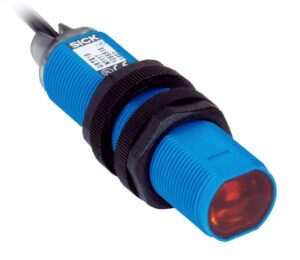
Motion Sensors:
These sensors detect motion or movement in their surroundings. Types of motion sensors include passive infrared (PIR) sensors, microwave sensors, and ultrasonic sensors.
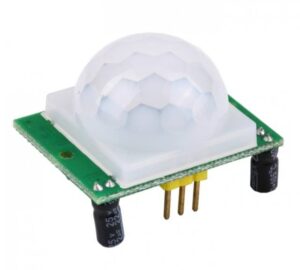
- Passive Infrared (PIR) Sensors: Detect changes in infrared radiation emitted by objects. Widely used in security systems, lighting control, and occupancy detection.
- Microwave Motion Sensors: Emit microwave signals and measure reflections off objects. Suitable for motion detection through walls and barriers, used in automatic door openers, lighting, and intrusion detection.
- Ultrasonic Motion Sensors: Emit high-frequency sound waves and measure reflections. Used in occupancy detection, automatic faucets, and robotics.
- Vibration Sensors: Detect movement or vibrations, commonly used in security systems for doors and windows, and in industrial equipment and structural health monitoring.
- Active Infrared (IR) Motion Sensors: Emit infrared light and detect changes in the light pattern caused by moving objects. Used in automatic door openers, elevator door safety systems, and traffic sensors.
Types of Force Sensors:
Force sensors measure force applied to them and convert it into an electrical signal. Forces measuring is used in weighing scales and industrial applications material testing, crane scales industrial weighing and process control.
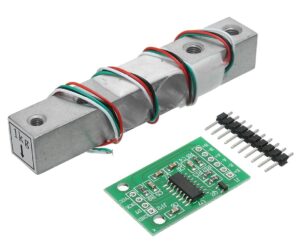
- Strain Gauge Load Cells: These measure force by detecting deformation (strain) in a load-sensitive element, typically made of metal. Attached strain gauges measure strain, converted into an electrical signal proportional to the force. They come in various types: Tension, Bending Beam and Compression type Load Cells.
- Piezoelectric Load Cells: Generate electrical charge in response to force. Deformation causes a change in electric polarization, offering high sensitivity and fast response times for dynamic force measurement like impact testing and vibration analysis.
- Hydraulic Load Cells: Measure force by detecting pressure changes in a hydraulic system. Force compresses hydraulic fluid, and pressure change is measured and converted into an electrical signal. Used in heavy-duty industrial weighing and material testing.
- Pneumatic Load Cells: Measure force by detecting pressure changes in a pneumatic system. Similar to hydraulic load cells, but with compress air. Used in environments where hydraulic fluids are not suitable, like food processing.
- Capacitive Load Cells: Measure force by detecting changes in capacitance between plates caused by force. Offer high accuracy and stability, used in precise force measurement applications like materials testing and medical devices.
- Magnetostrictive Load Cells: Measure force by detecting changes in the magnetic properties of a magnetostrictive material. Used in applications such as tension measurement in cables and force measurement in industrial automation.
Types of Humidity Sensors:
Humidity sensors measure the moisture content in the air or other gases. Types include capacitive, resistive, and thermal conductivity humidity sensors.
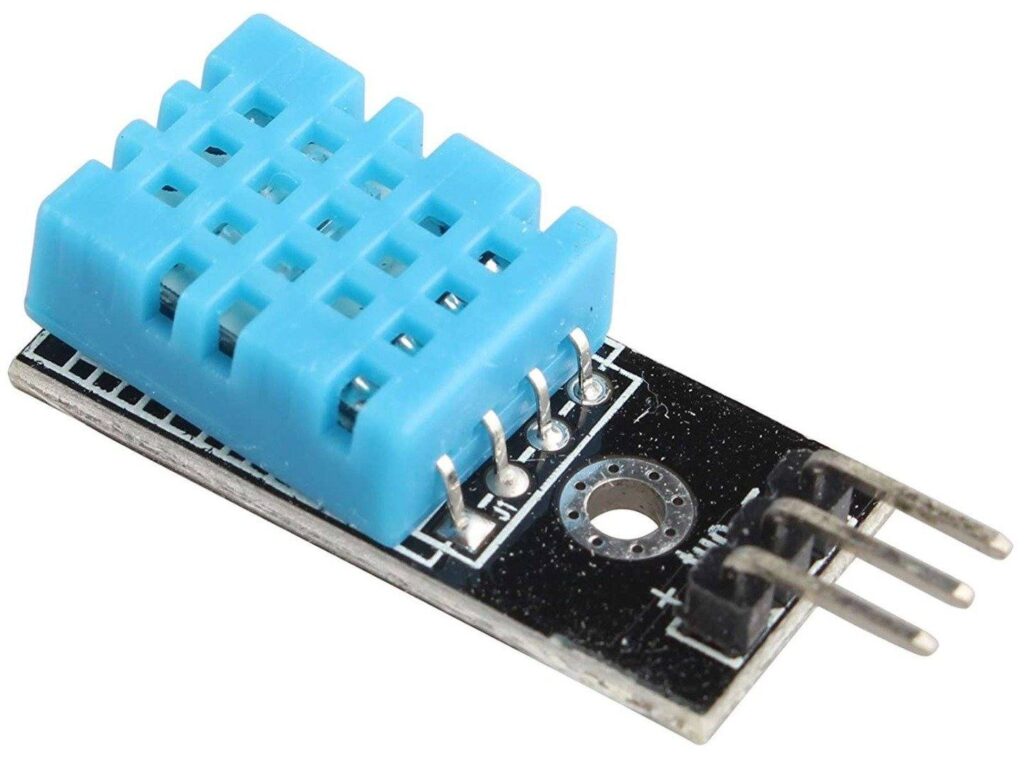
Capacitive Humidity Sensors: Measure humidity by detecting changes in a moisture-absorbing material’s dielectric constant, which alters capacitance. This change is converted into a humidity reading.
Resistive Humidity Sensors: Also called hygrometers, these sensors use a humidity-sensitive material whose electrical resistance changes with humidity. The resistance is measured to determine humidity levels.
Thermal Conductivity Humidity Sensors: Measure humidity by detecting changes in air’s thermal conductivity due to moisture content. They use two temperature sensors, one heated and one unheated, to determine humidity levels based on the difference in temperature.
Light Sensors:
Light sensors detect light levels in their environment. Types include photodiodes, phototransistors, and photoresistors.
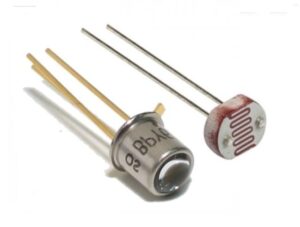
- Photodiodes: Convert light into electricity, used in light meters, communication systems, and cameras.
- Phototransistors: Convert light into electricity with high sensitivity, used for ambient light sensing, street lighting, and optical switches.
- Photoresistors (LDR – Light-Dependent Resistors): Change resistance with light intensity, used in light-sensitive circuits, streetlights, and cameras.
- Photovoltaic Cells (Solar Cells): Convert light into electricity, used in solar panels for homes, businesses, and industries.
- CCDs and CMOS Sensors: Convert light into electrical signals for cameras, capturing images and videos.
- Pyroelectric Sensors: Detect changes in infrared radiation and light, used in motion detection, security alarms, and occupancy sensors.
Level Sensors:
These sensors detect the level of liquids or solids in a container.
Ultrasonic Level Sensors: Emit high-frequency sound waves that bounce off the liquid’s surface and are received back. By measuring the time it takes for the waves to return, they calculate the liquid’s distance. They’re non-contact and work well with corrosive, sticky, or slurry liquids.
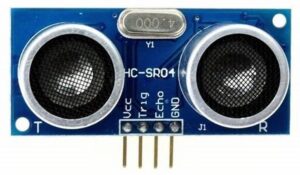
Float Level Sensors: Consist of a float attached to a buoyant stem. As the liquid level changes, the float moves, actuating a switch or potentiometer. Simple and reliable, suitable for clean liquids. Variations include magnetic and mechanical float switches.
Capacitance Level Sensors: Measure capacitance change between electrodes as the liquid level changes. When the liquid reaches the electrodes, the capacitance changes, detected by the sensor. Versatile for both conductive and non-conductive liquids.
Gas Sensors:
Gas sensors detect the presence of various gases in the air. Examples include carbon dioxide sensors, oxygen sensors, and methane sensors.
The MQ series gas sensors are widely used for detecting various gases in different environments. Here’s an overview of some commonly used ones:
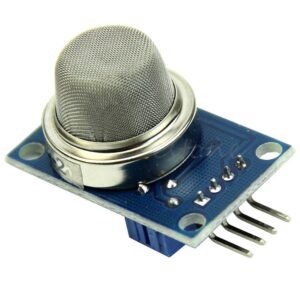
- MQ-2 Gas Sensor (Combustible Gas)
- MQ-3 Gas Sensor (Alcohol)
- MQ-4 Gas Sensor (Methane, CNG Gas)
- MQ-5 Gas Sensor (LPG, Propane)
- MQ-6 Gas Sensor (LPG, Butane, Propane)
- MQ-7 Gas Sensor (Carbon Monoxide)
- MQ-8 Gas Sensor (Hydrogen)
- MQ-9 Gas Sensor (Carbon Monoxide, Methane, LPG)
- MQ-135 Gas Sensor (Ammonia, Benzene, Smoke)
- MQ-136 Gas Sensor (Hydrogen Sulfide)
- MQ-137 Gas Sensor (Ammonia)
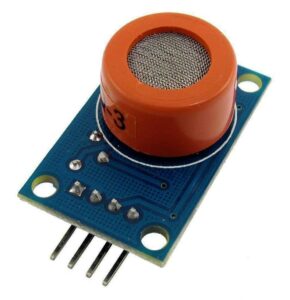
Commonly used for gas leakage detection in homes, agriculture, air quality monitors, gas leakage detectors, and safety alarms industrial safety systems.
Flow Sensors:
Flow sensors measure the flow rate of liquids or gases. These sensors find applications in various industries, including water management, industrial processes, HVAC systems, and automotive applications.
Turbine flow sensors: Commonly used to measure the flow rate of liquids like water. They work by using a rotating turbine to detect the flow velocity, which is then converted into a volumetric flow rate. Here’s how they work:
The fluid moves through a turbine rotor, causing its blades to rotate. The rotation speed of the rotor is directly proportional to the flow rate of the fluid. Sensors, often Hall-effect sensors or magnetic pick-ups, convert this rotation into an electrical signal.
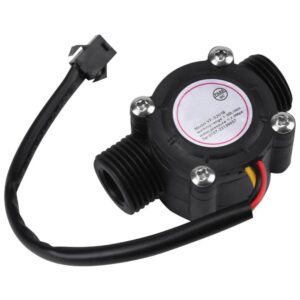
Electromagnetic flow sensors: Also known as magnetic flow meters, are commonly used to measure the flow rate of conductive liquids in industries. They work based on Faraday’s law of electromagnetic induction.
When a conductive liquid flows through a magnetic field, it induces a voltage perpendicular to both the flow direction and the magnetic field direction. This induced voltage is directly proportional to the flow velocity, allowing for accurate flow rate measurement.
Thermal flow sensors Also known as thermal mass flow meters, measure the flow rate of gases using the heat transfer principle. They’re widely used in industries for gas flow measurement and control. Here’s how they work:
The rate of heat transfer from a heated sensor element to the flowing gas is proportional to the gas’s mass flow rate.
Position Sensors:
Position sensors determine the position or displacement of an object. Types include potentiometers, linear variable differential transformers (LVDTs), and encoders. Here are a few types of sensors for measuring position.
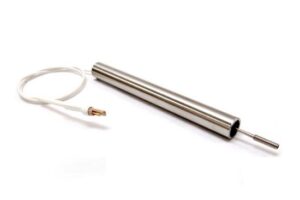
- Potentiometers are variable resistors that change resistance based on a sliding contact’s position. They’re used in control systems, joysticks, and volume controls.
- LVDTs convert linear motion into an electrical signal using coils on a cylindrical core. They’re highly accurate and used in industrial automation and machine tools.
- Rotary Encoders measure shaft position or speed using light or magnets. They’re used in robotics and CNC machines.
- Linear Encoders measure linear displacement along a single axis with high precision. They’re used in metrology and CNC machines.
Gyroscope & Acceleration Sensors:
These sensors measure the rate of change of velocity of an object. Examples include accelerometers and gyroscopes.
Accelerometer Sensor: They measure acceleration forces in three-dimensional space. They detect changes in velocity and can measure static (gravity) and dynamic (motion-induced) accelerations.
They work using Microelectromechanical Systems (MEMS) technology. Some accelerometers use piezoelectric materials that generate an electrical charge when stressed or accelerated. Others employ tiny structures on a silicon wafer measuring acceleration by detecting changes in capacitance or resistance.
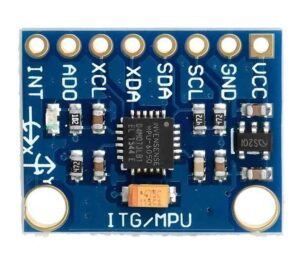
Gyroscope sensors: It measure the rate of rotation or angular velocity around one or more axes. They help determine orientation and angular motion.
MEMS gyroscopes typically consist of a vibrating structure (e.g., a tuning fork) that oscillates when subjected to rotation. The Coriolis effect causes a displacement perpendicular to the direction of rotation, which is detected and converted into angular velocity.
They’re widely used in automotive, aerospace, consumer electronics, and industrial monitoring.
Sound Sensors:
Sound sensors, also known as sound detectors or microphones, convert sound waves into electrical signals. They’re used to detect sound levels, analyze audio signals, and trigger actions based on sound input.
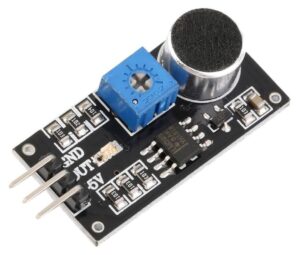
Electret Condenser Microphones (ECM): Most common type. They have a thin diaphragm, a backplate, and a capacitor. When sound waves hit the diaphragm, it vibrates, changing capacitance, which is converted into electrical signals.
Piezoelectric Microphones: Use the piezoelectric effect to convert sound waves into electrical signals. They contain a piezoelectric crystal that generates voltage when stressed.
MEMS Microphones: Small and low-power, using MEMS technology. They consist of a silicon diaphragm and a backplate, similar to ECMs, but smaller and more energy efficient.
Types of Color Sensors:
Color sensors, also known as colorimeters or color sensors, are devices that detect and measure the color of objects or surfaces. They work by analyzing the spectral characteristics of light reflected or transmitted by the object.
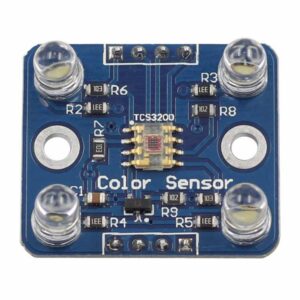
- RGB Color Sensors: RGB sensors detect red, green, and blue light and measure the intensity of each color component to determine the overall color of an object. They typically use three photodiodes or photodiode arrays to capture light in the visible spectrum.
- CMY(K) Color Sensors: CMY(K) sensors measure the subtractive color components of cyan, magenta, yellow, and optionally black. They are commonly used in color printers and copiers for color calibration and quality control.
- Spectral Color Sensors: Spectral sensors measure the full spectrum of light reflected or transmitted by an object. They provide more detailed information about the object’s color characteristics, allowing for more accurate color measurement and analysis.
- Colorimeters: Colorimeters are specialized devices designed for accurate color measurement and calibration. They typically include light sources, filters, and photodetectors to measure color parameters such as hue, saturation, and brightness.
Types of Biometric Sensors:
These sensors measure biological characteristics of individuals such as fingerprints, iris patterns, or heart rate.
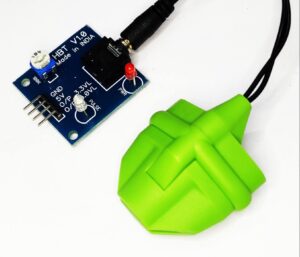
- Heart Rate Sensors: Measure heart rate and cardiovascular characteristics for biometric identification. Used in fitness trackers, healthcare devices, and access control.
- Fingerprint Sensors: Capture unique fingertip patterns for authentication. Common in smartphones, laptops, and access control systems.
- Facial Recognition Sensors: Identify individuals based on facial features like eyes, nose, and mouth. Used in smartphones, surveillance, and access control.
- Iris Scanners: Capture iris patterns for high-security identification in government facilities, airports, and border crossings.
- Voice Recognition Sensors: Analyze voice characteristics for user authentication and commands. Used in call centers, banking, and automotive systems.
- Hand Geometry Sensors: Measure hand size and shape for access control and time attendance in workplaces and secure facilities.
- Vein Scanners: Capture vein patterns for secure authentication in healthcare, banking, and access control.
- Gait Analysis Sensors: Analyze walking patterns for security and surveillance purposes.
Magnetic Sensors:
Magnetic sensors are devices that detect and measure magnetic fields. They are used in various applications to detect the presence, strength, or direction of magnetic fields.
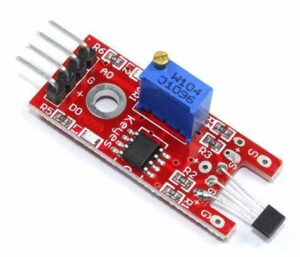
- Hall Effect Sensors: Detect magnetic fields by generating a voltage when exposed to one. Used in cars for speed and position sensing.
- Magnetoresistive Sensors: Detect magnetic fields by changes in resistance. Used in compasses and position sensors.
- Reed Switches: Two ferromagnetic contacts close or open when exposed to a magnetic field. Used in security systems and switches.
- Fluxgate Sensors: Measure magnetic field strength and direction by detecting flux changes. Used in navigation systems and compasses.
- Magnetostrictive Sensors: Measure changes in the length of a material when exposed to a magnetic field. Used in level sensors and position sensors.
- (Superconducting Quantum Interference Devices) SQUID Sensors: Extremely sensitive detectors based on superconductivity. Used in medical imaging and materials testing.
Tilt Sensors:
Tilt sensors, also known as inclinometers or tilt switches, are devices that measure the tilt, inclination angle or orientation of an object with respect to gravity. They are used in various applications for position sensing, leveling, and tilt monitoring.

Mercury Tilt Switches: Contain mercury and contacts. When tilted, the mercury bridges the contacts, completing the circuit. Used in alarm systems and game controllers.
Ball Tilt Sensors: Contain a conductive ball inside a tube. When tilted, the ball bridges the contacts, allowing current flow. Used in orientation sensing and alarms.
Soil sensors:
Soil sensors are devices used to measure the moisture content, temperature, and sometimes other parameters of soil. They are valuable tools in agriculture, gardening, environmental monitoring, and research.
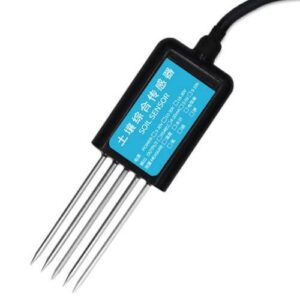
- Soil Moisture Sensors: Measure water content using capacitance, resistance, or other methods.
- Soil Temperature Sensors: Monitor soil temperature at different depths, aiding in plant growth and microbial activity.
- pH Sensors for Soil: Determine soil acidity or alkalinity, crucial for assessing soil fertility and nutrient availability.
- Soil Nutrient Sensors: Advanced sensors measure nitrogen, phosphorus, and potassium levels for precision agriculture and research.
Touch Sensors:
Touch sensors are electronic devices that detect the presence or touch of a human finger or other conductive objects. They are widely used in various applications for user interfaces, control panels, and interactive devices. Here are different types of sensors used for measuring touch.
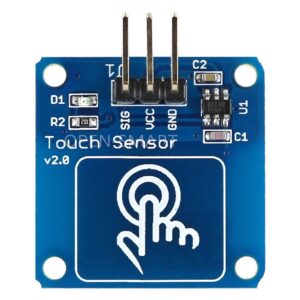
- Capacitive Touch Sensors: Detect touch by changes in capacitance when a conductive object approaches. Found in smartphones, tablets, and touchscreens.
- Resistive Touch Sensors: Consist of two layers separated by a gap. Pressure on the top layer changes resistance. Used in older touchscreens and control panels.
- Surface Acoustic Wave (SAW) Touch Sensors: Use ultrasonic waves over the screen surface. Touch absorbs waves, changing the signal. Found in high-quality touchscreens and kiosks.
- Infrared Touch Sensors: Project infrared light beams across the screen. Touch interrupts the beams, determining touch location. Used in interactive displays and kiosks.
- Projected Capacitive Touch Sensors: Use a grid of electrodes to detect touch input, providing multi-touch capabilities. Common in modern smartphones, tablets, and touchscreen displays.
Rain sensors:
Also known as rain gauges or rain detectors, are devices used to detect the presence and intensity of rainfall. They are commonly used in weather monitoring systems, irrigation systems, and smart home automation.
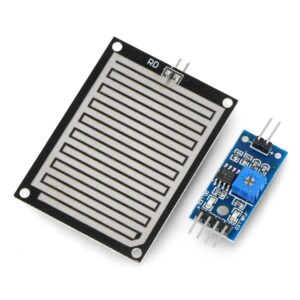
- Tipping Bucket Rain Gauges: Funnel rainfall into a bucket that tips when full, triggering a sensor. Used for precise measurement in weather monitoring and irrigation systems.
- Optical Rain Sensors: Use infrared or laser beams to detect raindrops passing through. Commonly used in automotive automatic windshield wipers to measure rainfall intensity.
- Capacitive Rain Sensors: Measure changes in capacitance to detect water presence. Used in irrigation systems to adjust watering schedules based on rainfall.
- Conductive Rain Sensors: Use electrodes to detect water presence. When raindrops bridge the electrodes, it completes a circuit, indicating rainfall. Simple and cost-effective, used in various applications.
Speed sensors:
Speed sensors are devices that measure the speed or velocity of an object, typically by detecting motion or rotational speed. They are widely used in various applications, including automotive, industrial, aerospace, and consumer electronics.
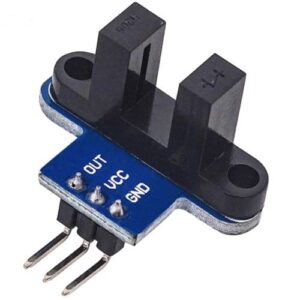
- Hall Effect Sensors: They find magnetic fields, often in cars for wheel speed, and in machines for speed and position.
- Inductive Sensors: These detect metal speed by changes in inductance, seen in machinery like conveyors.
- Optical Encoders: They use light to track the speed and position of rotating parts accurately, used in robots and CNC machines.
- Magnetic Speed Sensors: These sensors use magnets to measure speed, common in cars and industries.
- Tachometers: They measure rotation speed using magnets, light, or other methods, found in vehicles and machines.
Each type of Sensor has its own advantages and limitations, and the choice depends on factors such as the detection range, sensitivity, response time, power consumption, and environmental conditions like temperature pressure, range, size, cost etc.
Circuits of MOC7811 Sensor with Arduino, it’s Datasheet & Pricing
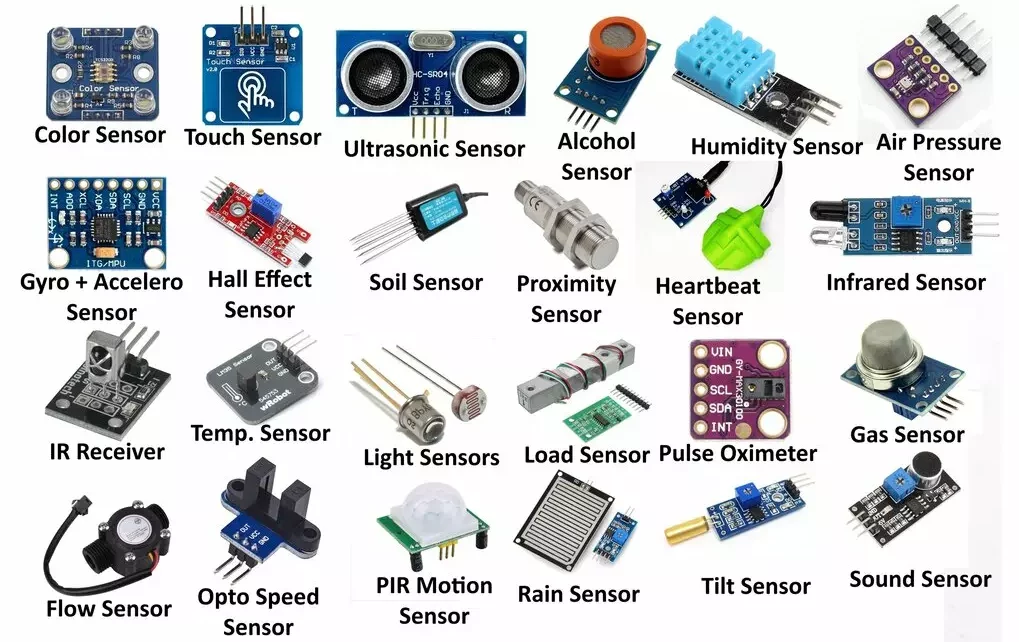
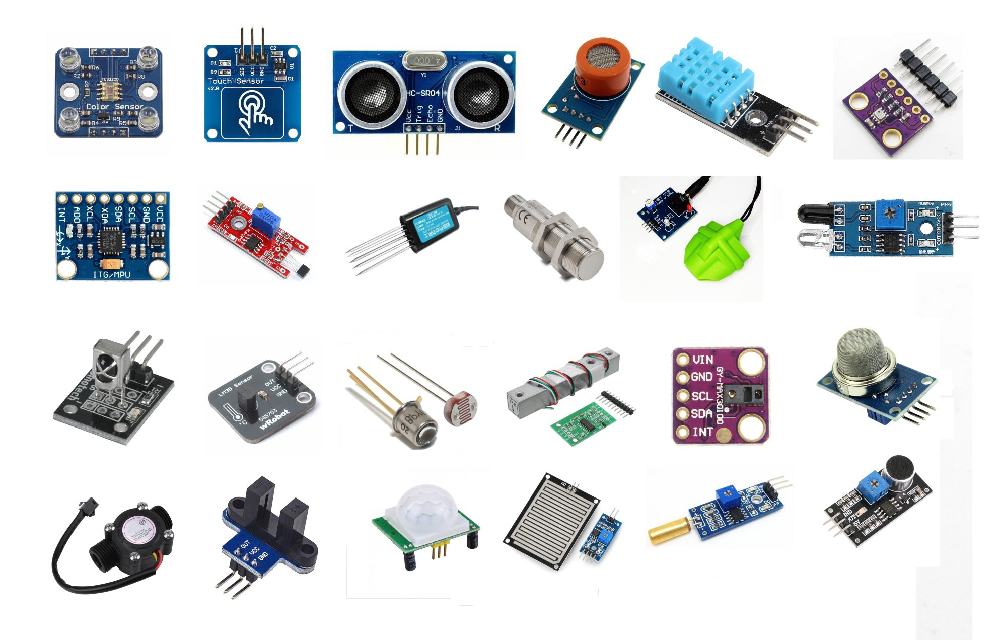

Send me this pdf please
Use your browser to save it
Abhishek!, thanks a lot for this enlightenment.
Welcome